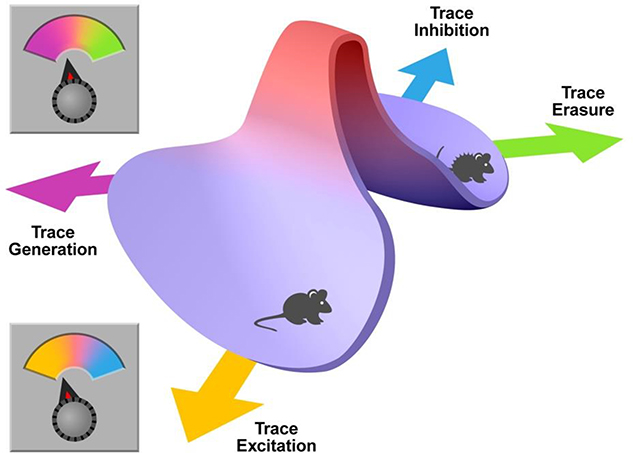Figure 1.
Visual representation of behavioural tuning where modulation of both fear cells and inhibitory control cells can occur along a continuum. When erasure of original fear (green) and/or fear trace inhibition (blue) occurs, animals may transition from fear behaviours such as freezing and escape behaviours, to normal grooming and exploratory behaviour. However, when original fear traces are activated (purple) and/or engagement of inhibitory control is low (yellow) animals will fail to overcome the threshold to re-engage normal behaviours and remain freezing or performing escape behaviours. Thus, the dynamic equilibrium of behavioural expression relies on mechanisms which modulate either of these aspects.

